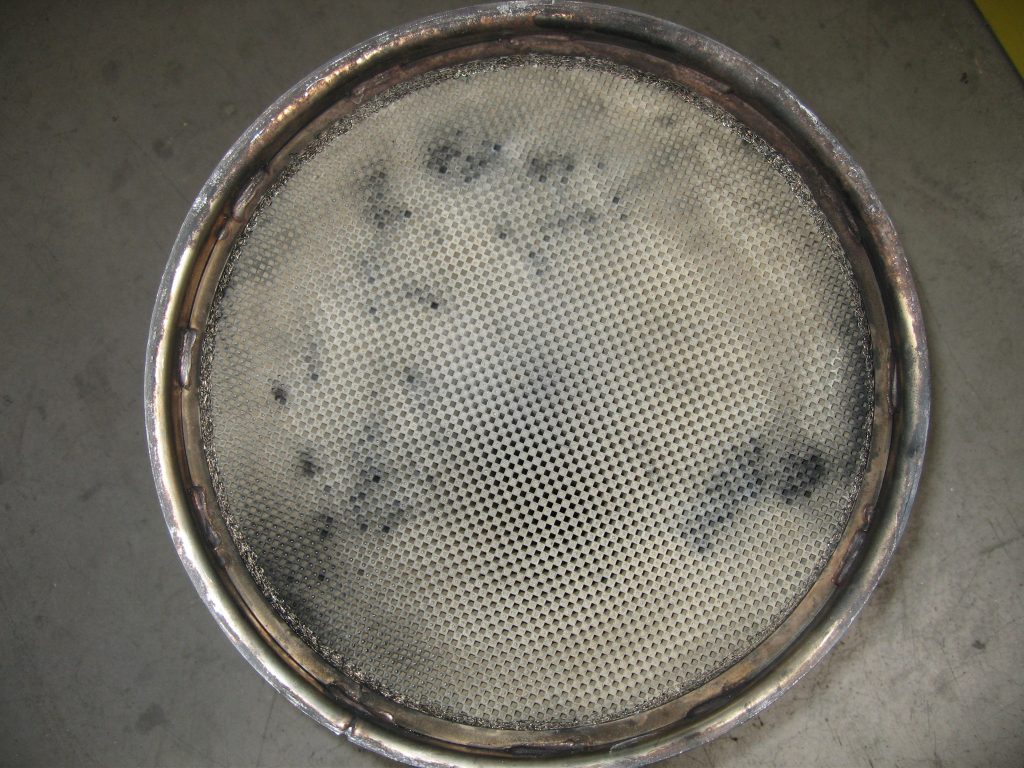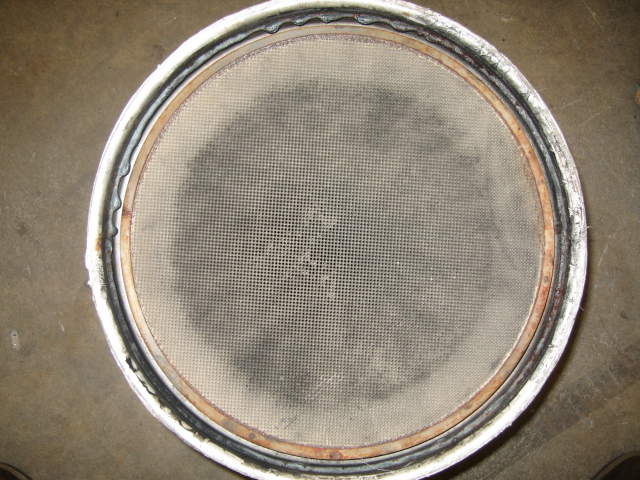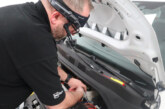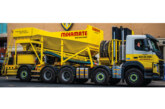
DPF Inspection is key in order to remain compliant and ensure that vehicles are meeting emissions requirements. A poorly performing DPF means that the exhaust function is not working as it should. Stuart Amos, Product Marketing Manager at Hartridge Ltd, explains how to maximise DPF longevity by giving them a clean during periodic inspections.
DPF issues range from a gradual deterioration of performance and fuel consumption, although any symptoms are generally unnoticed by the driver, to a forced static regeneration or even a replacement DPF. It is not just domestic motorists that suffer from these problems as short journeys can spell disaster for any modern diesel equipped with a DPF.
Buses in particular are at risk of suffering from a blocked DPF as they spend lots of time idling at a standstill and exist in a world of constant stopping and starting. They are often simply unable to get up to a high enough temperature to ‘naturally’ burn off the soot in the DPF passively. That aside, when does a bus even get the time to activate a forced static regeneration at the roadside, let alone go for a long run to induce an active regeneration?

Leaving a DPF even partially blocked on a bus day after day is going to have consequences as the engine is not going to be able to breathe as it should and impact efficiency and MPG. Soot in DPFs on buses can build up very quickly and as it fills up, the need for regeneration becomes more frequent. Add to that the potentially rapid build-up of incombustible ash, and the DPF’s overall soot handling capacity reduces fast to further increase the frequency of the need for DPF regeneration. It is widely recognised that the overall service life expectancy of a DPF reduces when it isn’t correctly maintained. One reason is due to the accumulation of ash, which is known to be a major contributor to the deterioration of a DPF’s internal substrate, especially when DPF regeneration can only be achieved via active and forced cycles.
As is the case with passenger cars, there is a sliding scale of problems that starts with decreased MPG and can ultimately end up with vehicles subject to unplanned downtime whilst the DPF is replaced. Somewhere in the middle might be a situation where bus route service levels are subject to time delays and vehicles struggle to run properly.

Whilst DPF servicing comes at a cost, emptying a DPF of its soot and ash loading just once annually is definitely a worthwhile intervention to consider if the vehicle doesn’t have to be taken out of service to do so. So when it comes to which method to choose for cleaning DPFs there are many options open to bus fleets.
Out-source or invest?
The conundrum is to choose out-sourcing or make the decision to invest. The former usually involves signing up for a service exchange program and scheduling all DPF cleans to a third party. This avoids any need for a costly initial outlay by bringing it in-house. Or do you embrace the opportunity and invest in machinery to eliminate additional downtime and enable drive-in-drive-out DPF cleaning?

This brings the advantage of on-demand cleaning for DPFs that have become troublesome on the vehicle in service, not to mention a potential revenue stream for local DPF cleaning. The capital investment option of course involves a high initial outlay but over the years pays for itself and does offer far greater flexibility.
With some DPF cleaning machines, the entire process can take less than an hour from DPF removal through to re-fitting it. If a bus comes in for a service then this can fit easily within the tightest of schedules. It also allows buses that are reported back from drivers as having problematic DPFs to intervene and fix the issue very quickly back in the depot.
One such machine is the DPF300 series from Hartridge, pictured. This is an air-based machine that uses patented air-knives to blast from both the top and bottom ends of the DPF. It also enables DPFs to be flow-tested before and after cleaning and to be baked before using the air cleaner if a DPF is particularly compacted with soot, although Hartridge says this is only around one in six DPFs.

Either way, paying as you go or buying a machine upfront, payback might not be easy to see immediately. Preventative maintenance doesn’t print money or issue credit notes; it is purely a risk mitigation exercise and does come at a cost. However, the point is that the overall cost of ‘DPF related’ expenditure will be far less than if DPFs were not routinely cleaned.
In the case of periodically emptying DPFs of soot and ash; doing so prevents them from ever becoming an issue in the first place and this is the main point of the proactive approach. If you think about it, all filters are the same. They fill up with stuff and when they are full or blocked they stop working very well and need to be emptied or replaced. There is certainly enough of that happening in the United States to justify hundreds of machines having been installed in workshops to date.
However as more and more Euro VI heavy duty engines become registered, the requirement for local drive-in-drive out cleaning will increase as the engines will get older, put on the miles and the consequences of poorly maintained DPFs will become well understood, just like it has in the USA.









